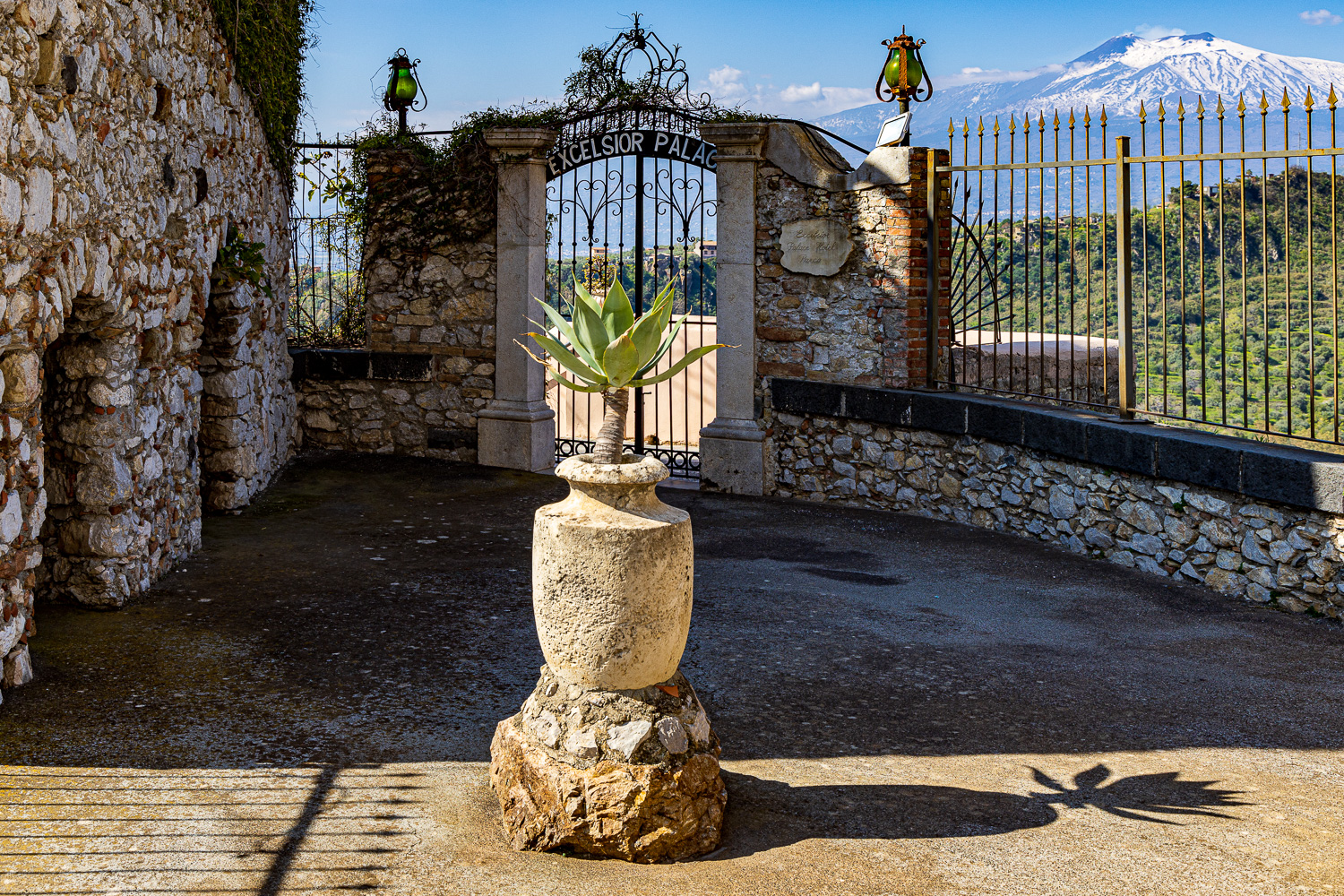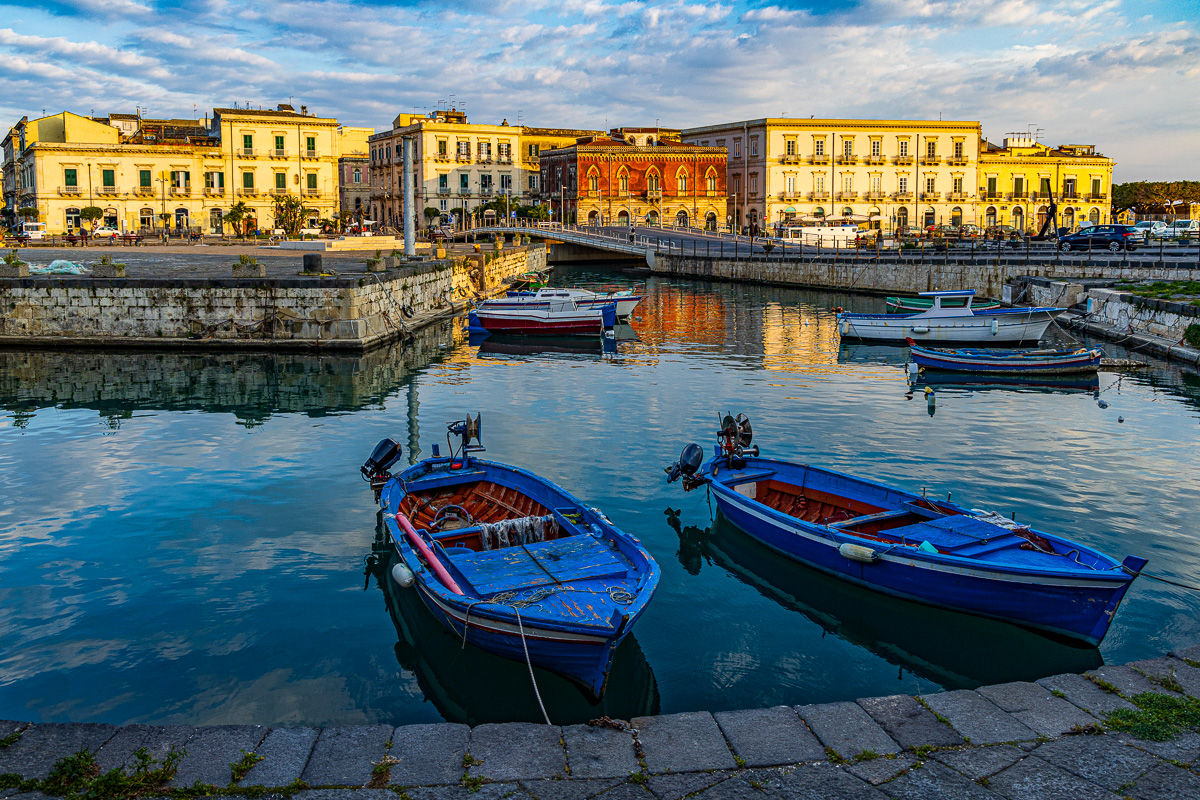We packed our bags, tipped our hats to the fine staff at the Excelsior Palace Hotel and bid adieu to Mt. Etna. We were moving to Siracusa.

On my way to the bus, I spotted some colorful graffiti. When I noticed it was signed by Lapo Fatai, I did an internet search and learned he’s a street artist from Naples who “discovered graffiti at a young age and has remained faithful to it ever since.” He obviously spent some faithful time in Taormina.
Mouse over the small photos in galleries to see captions.
Click on any one to enlarge, then use arrows to scroll through the rest of the images.
Heading south to Siracusa, we stopped for lunch at Villa Trinità, an agriturismo in Mascalucia. Agriturismo — a combination of the words for “agriculture” and “tourism” in Italian — refers to small family-owned farms that have added restaurants and rooms for rent to supplement their income. The Villa, built in 1609, still has the same simple look of the rural building that was its original design. So, if you’d like to vacation on a farm, just find an agriturismo that suits your fancy. I spent my first 18 years on a farm so I don’t need to vacation on one, but they are interesting to visit.
Arriving at our destination we were met by the friendly family dog. We were then given an interesting tour of the property, which included a citrus orchard. What surprised me was that the orange and lemon trees were full of ripe fruit. Mid-march seems like an unusual time for fruit to be ripe. Lemons are apparently very popular in Italy and Sicilian lemons are widely known and distributed throughout Europe.
What caught my camera’s attention the most, as you can probably tell from the images above, were the old buildings, flowers, interesting art, and paths winding through the trees. There was an old phone booth that had emigrated from England, a magenta bougainvillea gracing a faded yellow wall, a window bricked into an old stone wall, and even a white peacock. If NBC had used that peacock for its network symbol would we still be watching black and white TV?
After lunch we boarded our bus and continued the drive to Siracusa. Siracusa was settled by the Corinthians in 734 BCE and eventually grew to become a major power in Magna Graecia (Greater Greece). For a time it even surpassed Athens. Although the town was destroyed by a major earthquake in 1693, a large number of Greek and Roman ruins remain in the city. Most of these ancient structures are found on the small historic island of Ortigia, which is where we spent most of our time in Siracusa. Checking into our hotel we found the balconies festooned with ceramic pine cones. They traditionally represented fertility but the modern interpretation is that they stand for hospitality and welcoming.
Our hotel was only a couple blocks from Ortigia. Crossing a bridge to start our tour we quickly reached the Temple of Apollo. It was built in 580 BCE, predating the Parthenon by 130 years, and is the first stone Doric temple in Sicily. We passed the Fountain of Diana, the Roman goddess of the hunt, protector of Ortygia in ancient times. In a place that dates back thousands of years you would think everything is old. This fountain, however, was built in 1907, just the blink of an eye in Grecian time.
One of the very nice places on this early evening walk was the Piazza Duomo, the spacious main square on Ortigia. It’s surrounded by beautiful baroque buildings such as Cathedral of Syracuse, one of the first Christian churches in Europe; the Archbishop’s Palace; and the Church of Santa Lucia alla Badia, dedicated to the patron saint of Syracuse, Saint Lucia. During the day time you will often see young boys playing football, i.e., soccer, here. With so many narrow streets, this might be one of the few places in the city with enough room for them to practice their sport. Passing a travel agency, I happened to notice a sign with a very familiar American face, Mark Twain. The sign offered his views on the value of travel. I couldn’t agree more.

<— Volcanoes and Wine (Sicily Part 3) :: (Sicily Part 5) Back in Time in Buscemi –>